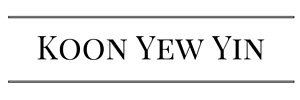Many ignorant investors would think that the company is not so good because the company required to place out shares with a discount to raise more funds and many shareholders would feel cheated because there will be more issued shares to dilute their shareholdings.
In fact, raising funds is a good sign that the company required more capital to do more business. In all business schools, students are told that if they do business with only their capital, they are considered inefficient. They should not be afraid to borrow money to do more business to make more profit. As long as they can make more money than the interest charges, they should borrow more money.
Right issues and share placement are better than borrowing money from the banks for the shareholders and the company. By this way the company will be stronger with the increased capital and does not owe the bank any money.
The company made the following announcement:
On behalf of the Board, Kenanga IB wishes to announce that an application for an extension of time of up to 26 August 2020 to complete the implementation of the Private Placement (96,480,983 shares) hasbeen submitted to Bursa Securities on 10 February 2020.
The company first made the announcement for right issues and share placement on 17 May 2019. The right issue of 1 new share for every 10 shares held by shareholders was completed on 19 Dec 2019. The total number of right issues was 96,480.983 shares at 92 sen each. As a result of the right issues the total number of issued shares is about 1,060 million shares.
When the share placement was first announced on 17 May 2019, its price was only about Rm 1.00 and the last traded price was Rm 2.85, nearly 300% more expansive. That is why the company could not find a buyer. The total amount required to buy 96 million shares at about Rm 2.80 per share is about Rm 270 million. Who has so much of money to buy all the placement shares?
Based on the company’s first share placement announcement on 17 May 2019 when the share price was about Rm 1.00, the total amount the company expected to receive was about Rm 96 million.
My proposal:
The company offer 1 new share for every 10 shares held by shareholders at Rm 1.50 (about 50% discount as allowed by SC rule) with 1 free convertible warrant. The price for conversion can be fixed later according to SC rule. The total number of right issues will be about 106 million shares at Rm 1.50 and the company will eventually receive Rm 160 million. The company will also receive a lot more money when all the warrants are converted.
Shareholders should be very happy to buy the right issues because they can easily sell the free warrants in the open market. Giving out free convertible warrants is like giving out cash ‘cash ang pow’ to the shareholder.
As long as there is oil, Petronas will continue to pump because Petronas has already paid for the cost of the oil rigs and awarded more maintenance contracts to Dayang. Among the few oil rig maintenance contractors, Dayang is the biggest and the most efficient in this region.
On 22nd Nov the company announced its 3th quarter result. Both its profit and revenue have improved.
1st quarter eps -0.43 sen, revenue Rm 156 million
2nd quarter eps 5.71 sen, revenue Rm 247 million
3rd quarter eps 11.10 sen, revenue Rm 357 million
Since it has resolved its financial constrain by its recent right issues, its 4th quarter result should be better than its 3rd quarter. Based on its profit growth rate of the last 3 quarters, from – 0.43 to 5,71 to 11.1 sen, its 4th quarter should be more 15 sen. The total for the year will be more than 30 sen per share. Since it has such a rapid profit growth rate, it deserves to sell at above P/E 12. My immediate target price is Rm 3.60.
Based on my long experience, the share price should go up higher when the company offer free convertible warrants which is like giving out cash Ang Pow.
My experience:
I have been a co-founder of many listed companies namely Mudajaya, Gamuda, IGB, MBMR, Ipmuda, Rubberex and IJM Corporation Bhd. I retired as executive director of IJM in 1993 when I was 60 years old and I sat on the board for another few years until I became a full-time investor. I am now 87 years old.
